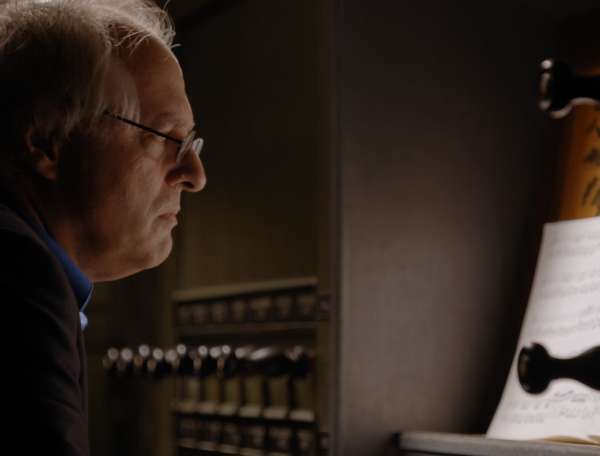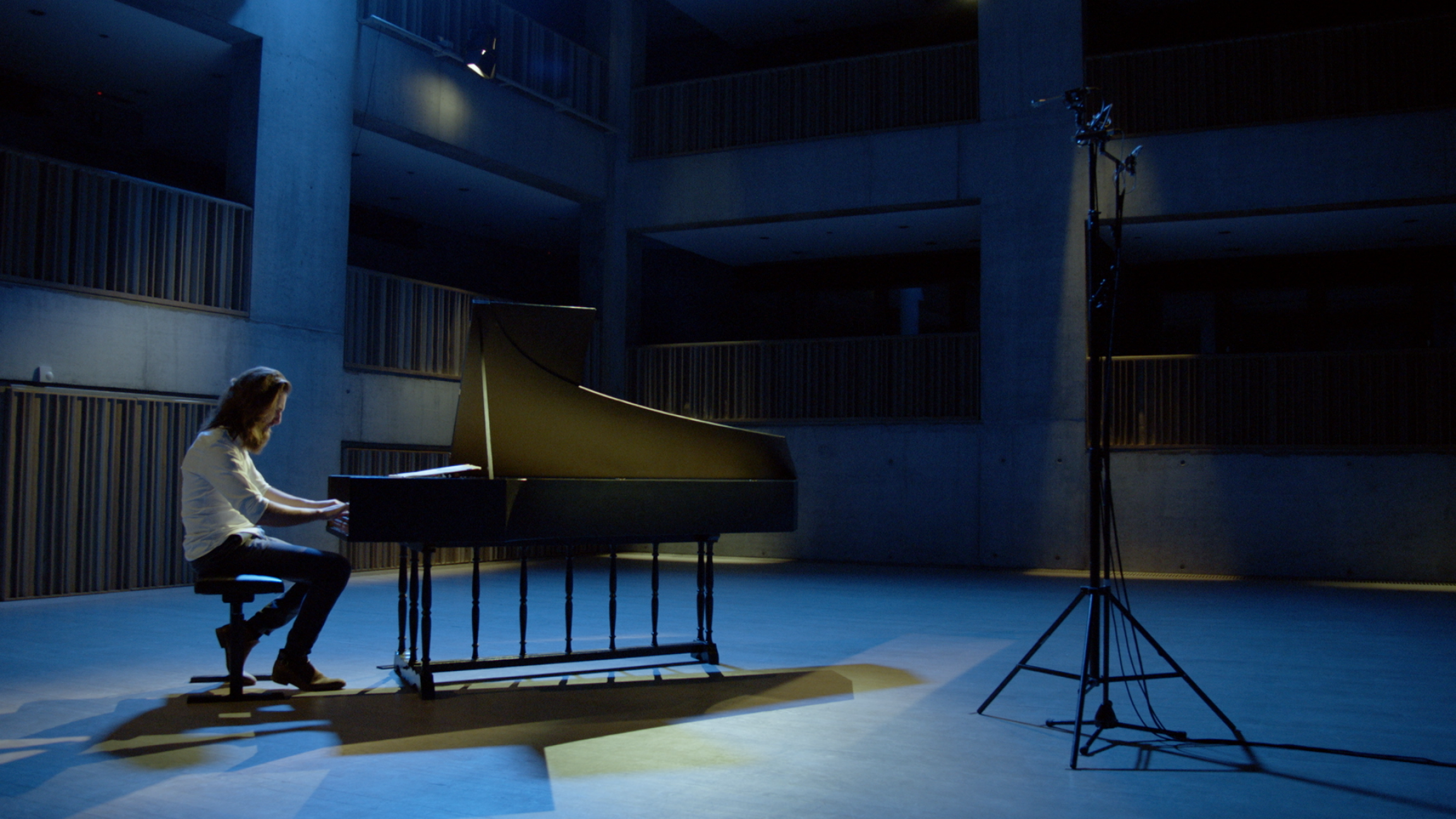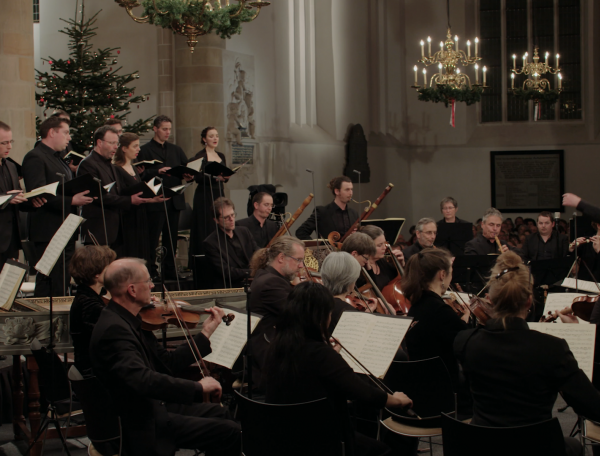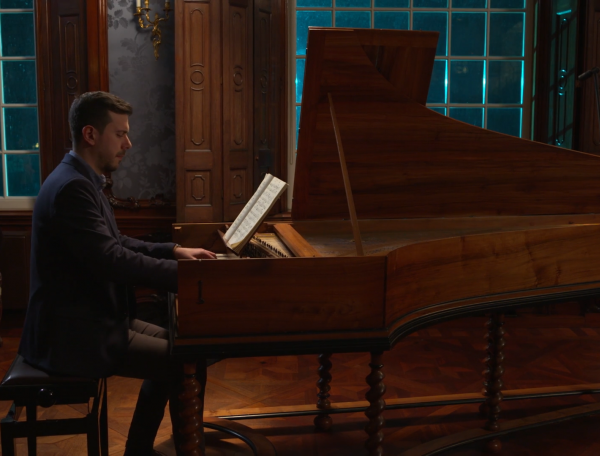

Goldberg Variations
BWV 988 performed by Jean Rondeau
Concertgebouw, Bruges
Behind the music
Never sleep again
The 'Goldberg Variations' as an exercise in restraint
The legend surrounding these variations is such a nice one. Count Hermann Karl von Keyserlinck was having trouble sleeping and asked Bach for some pleasant music to pass the time, to be played by Keyserlinck’s harpsichord prodigy Johann Gottlieb Goldberg. Bach’s link to the Russian ambassador Keyserlinck is plausible, in view of his help in fulfilling Bach’s dream of moving from Leipzig to the courts of Berlin and Dresden. However, there is much less certainty about Goldberg’s involvement. Bach probably had himself in mind, rather than the thirteen-year-old pupil of his son Wilhelm Friedemann, when composing what can probably be regarded as the best constructed, most expressive series of variations of the Baroque era. So the name 'Goldberg Variations' did not come from Bach himself. He referred to it practically as an ‘Aria mit verschiedenen Veränderungen […] zur Gemüths-Ergetzung’, which can be translated with a little poetic freedom as ‘variations for the soul’. The work was published as the fourth part of Bach’s encyclopaedic Clavier-Übung.
Structure
Bach’s title is rather misleading, as it is not the Aria that becomes the theme – the melancholic melody returns only at the end – but rather the accompanying bass line of thirty two notes (the same as the total number of sections). The thirty variations are first divided into two big groups, pivoting on the grand overture in French style of variation 16, and then into ten clusters of three. This division is not haphazard, but can be regarded as a ‘Gemüths-ergetzende’ reference to biblical law (the Ten Commandments) and God’s nature (the trinity). The ten clusters all follow the same pattern: character piece, virtuoso duet and canon. And finally, the canons have their own structure. In the first, the two following voices enter on the same note (no. 3); then on an interval of a second (one tone apart, no. 6); then on a third (two tones, no. 9), up to a ninth in no. 27, which is eight tones apart. Variation 30, which should have been the tenth canon in the sequence, appears in the surprising form of a quodlibet, a sort of light-hearted medley, in which Bach’s listeners would certainly have spotted two folk tunes straight away.
Tension curve
So wherein lies the genius of the 'Goldberg Variations'? What makes a performance such an emotional experience? Is the work so moving despite, or precisely because of its fascinating construction, erudite tricks and broad palette of styles? It is important that Bach does not just string together a haphazard series of variation techniques. Besides a clear architectural plan, the cycle has an affective curve in which the variations go ever higher and deeper. The tension rises to the limit because the music gradually searches out the extremes; ever wilder and ever more cautious at the same time. For example, the three minor variations, 15, 21 and particularly 25, make a stunning impact in between all the spirited fireworks in major. If you wish, you can follow the bass line in each variation, although Bach does not insist: his theme is literally an undertone, rather than a compelling melody. And whereas contemporaries often couldn’t wait to slacken the reins, Bach keeps them taut almost until the end. Only variations 28 and 29 are pure virtuosity (and practically impossible to play, even on a harpsichord with two manuals). The subsequent quodlibet seems to be an ironic pause before the aria returns in all its simplicity. Such a development makes great demands on both performer and listener. And certainly in the performance by Jean Rondeau, the 'Goldberg Variations' feel like a perilous yet ultimately exciting expedition.
Recording location
You are watching the 'Goldberg Variations' performed at Concertgebouw Brugge. The art institution, opened in 2002, was designed by the Ghent firm of architects Robbrecht en Daem. Besides the Concertzaal, which seats 1,289, it comprises the more intimate Kamermuziekzaal, inspired in part by the London Globe and the Guggenheim Museum in New York. It can seat 340 people in the performing space or on a small balcony on the ‘spiral’. The recording followed a concert by Jean Rondeau at the annual Bach Academy Bruges.
- BWV
- 988
- Title
- Aria mit 30 Veränderungen
- Epithet
- Goldberg Variations
- Instrument
- harpsichord
- Genre
- harpsichord works
- Serie
- Clavier-Übung I, II, IV, Klavierbüchlein für Anna Magdalena Bach
- Year
- 1741 (publication)
- City
- Leipzig
- First performance
- 1741?
- Special notes
- The Aria already appears in the Klavierbüchlein für Anna Magdalena Bach (1725). The complete aria with variations was published in 1741. Bachs own copy of the publication contains many corrections, as well as 14 canons with the bass line itself as the theme. The discovery of this 'Handexemplar' caused a sensation among Bach researchers in 1974.
Vocal texts
Original
Translation
Credits
-
- Release date
- 5 January 2018
-
- Recording date
- 6 June 2017
-
- Location
- Concertgebouw, Brugge
-
- Harpsichordist
- Jean Rondeau
-
- Harpsichord
- Jonte Knif & Arno Pelto, 2004
-
- Director
- Jonas Sacks
-
- Music recording
- Aline Blondiau, Guido Tichelman
-
- Camera
- Petr Cikhart
-
- Grip
- Stijn Becker
-
- Music edit and mix
- Aline Blondiau
-
- Video editing
- Chris Everts
-
- Colorist
- Joel Sahuleka
-
- Interview
- Jan Van den Bossche
-
- Producer
- Jessie Verbrugh
-
- Acknowledgement
- Concertgebouw, Brugge
Discover
Help us to complete All of Bach
There are still many recordings to be made before the whole of Bach’s oeuvre is online. And we can’t complete the task without the financial support of our patrons. Please help us to complete the musical heritage of Bach, by supporting us with a donation!

